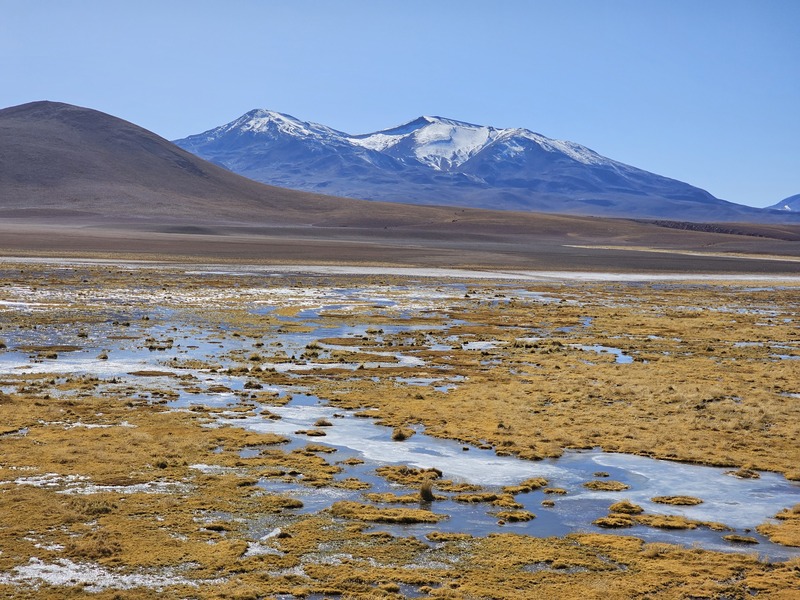My second trip to the Hispanic world in 2023, and one I enjoyed! The city of Santiago was fun and similar feel to Buenos Aires, though a fair bit more expensive. Overall, I would say to go for the wine country, Easter Island, Atacama Desert, and the Patagonian coast - not for Santiago itself.
Santiago was high in the mountains, when you could see them.
Smog was a continual problem during my trip.
There were some pretty cityscapes from the colonial era and beyond, but from what I could tell it would be rare to see them clearly from a distance.
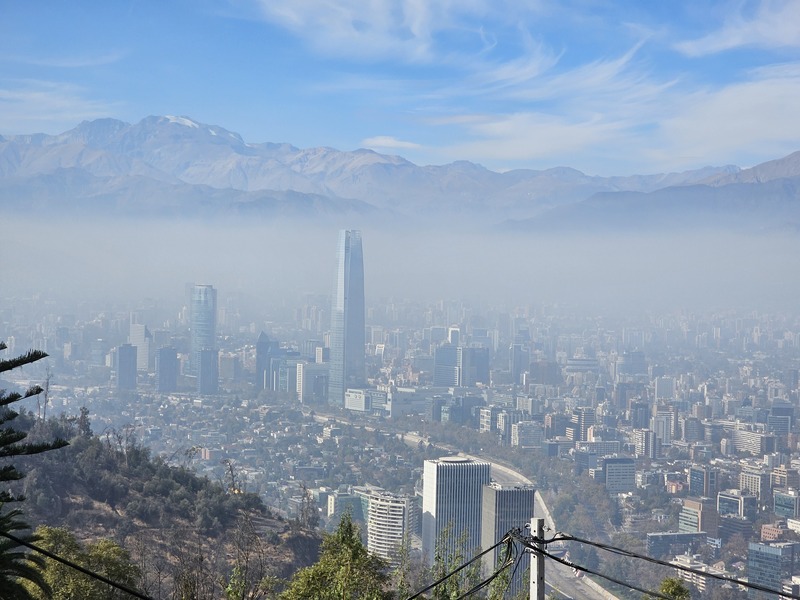 As with every Latin American capital I've visited so far, the Cathedral was impressive.
As with every Latin American capital I've visited so far, the Cathedral was impressive.

 The Palacio del La Moneda was also quite impressive, though I wasn not able to see it from the inside.
The Palacio del La Moneda was also quite impressive, though I wasn not able to see it from the inside.
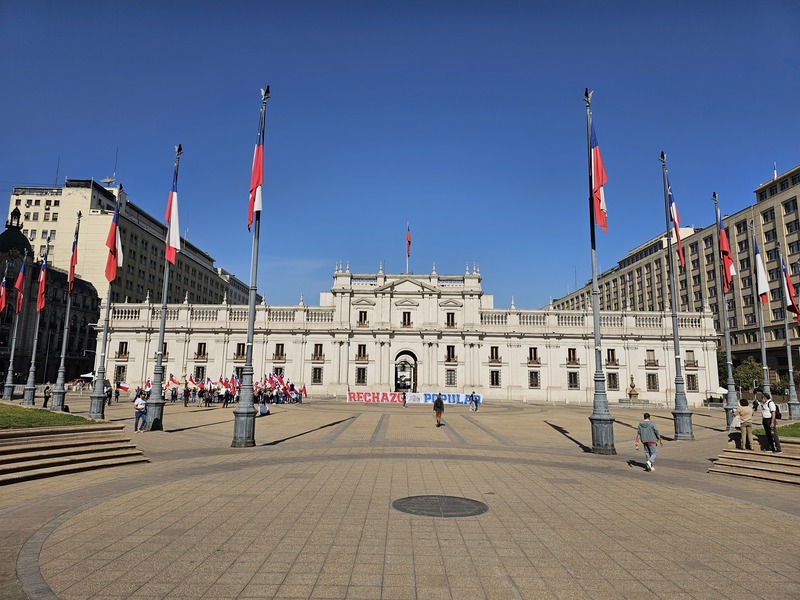 There was also more art than I was really expecting.
There was also more art than I was really expecting.
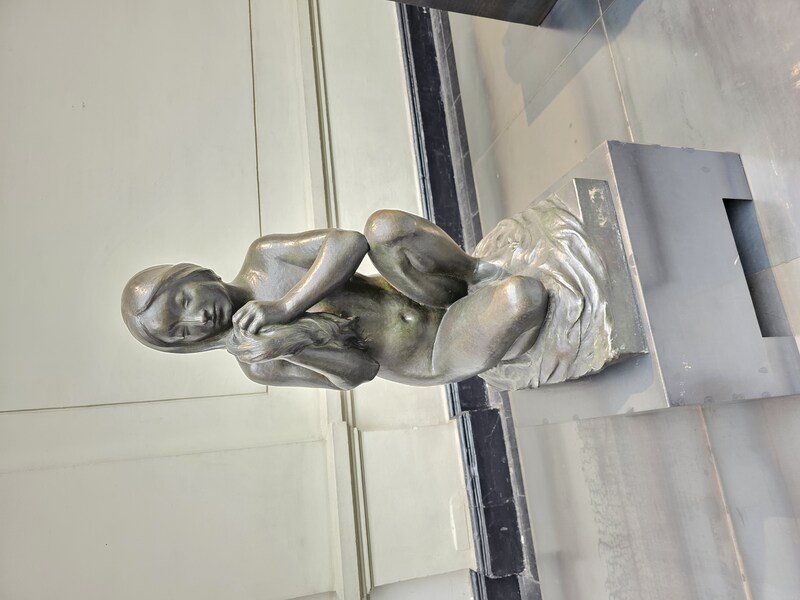
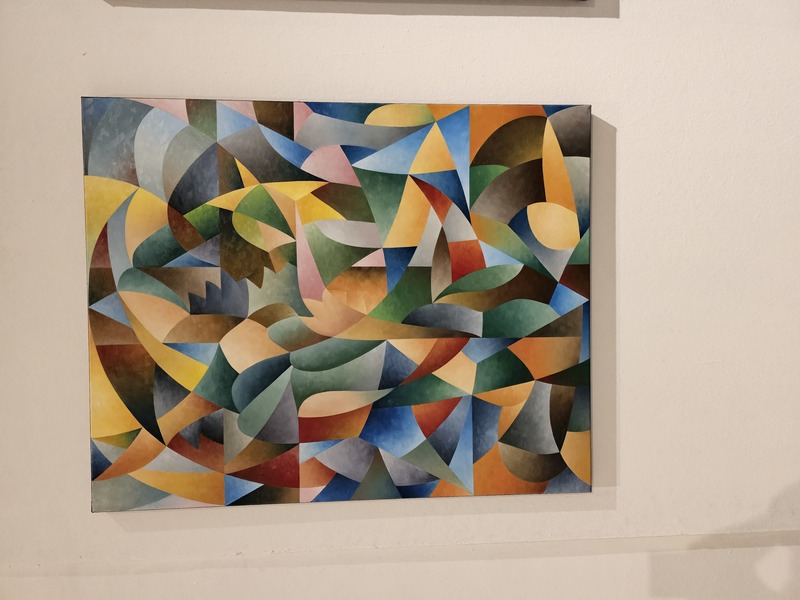
I took a day trip to Valparaiso, which was distinctive mainly for its extreme number of funiculars and prevalence of street art.
We stopped at the Vina Del Mar flower clock on our way, which was interesting but not worth defining a trip over.
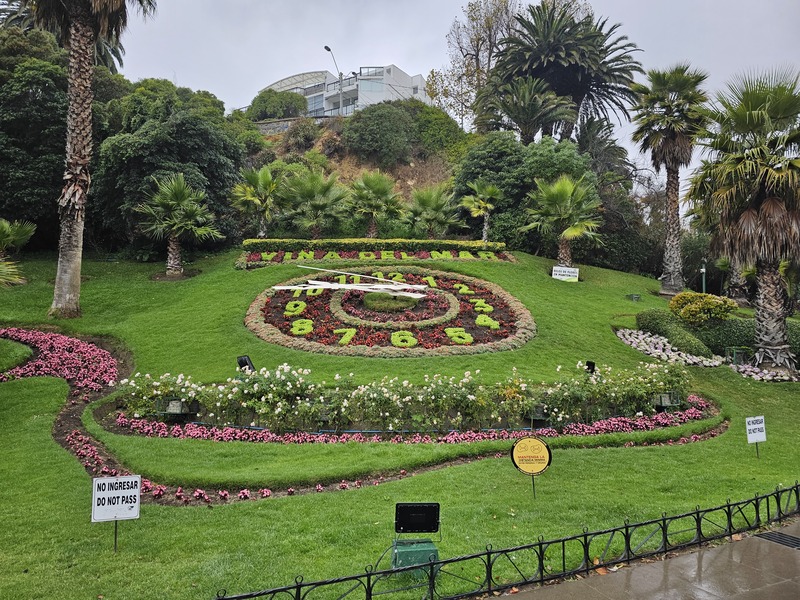 After that, we visited one of the very few Moai to have been removed from Rapa Nui (Easter Island).
This was of dramatically more interest to the rest of the tour group than to me, since I had already booked my trip to Easter Island at this point.
After that, we visited one of the very few Moai to have been removed from Rapa Nui (Easter Island).
This was of dramatically more interest to the rest of the tour group than to me, since I had already booked my trip to Easter Island at this point.
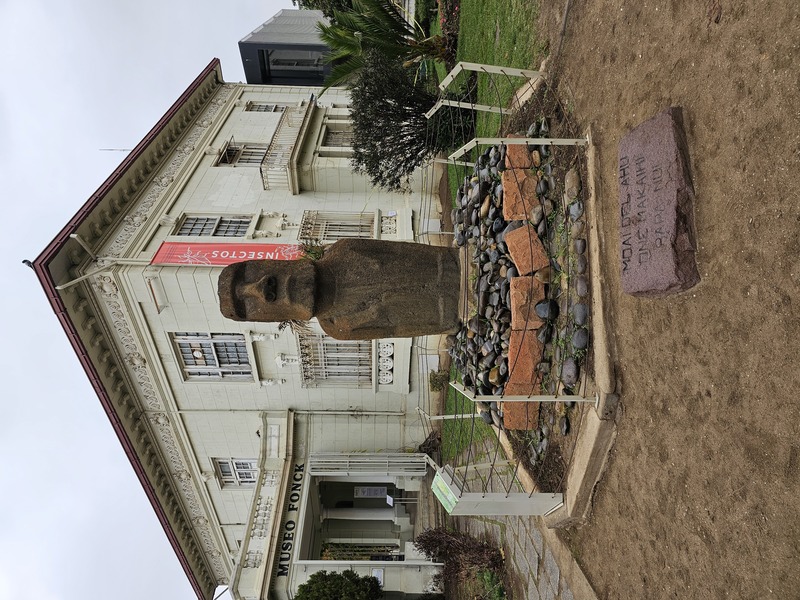 The city of Valparaiso featured some pretty colonial architecture, as it dates from the same era as Santiago.
The city of Valparaiso featured some pretty colonial architecture, as it dates from the same era as Santiago.
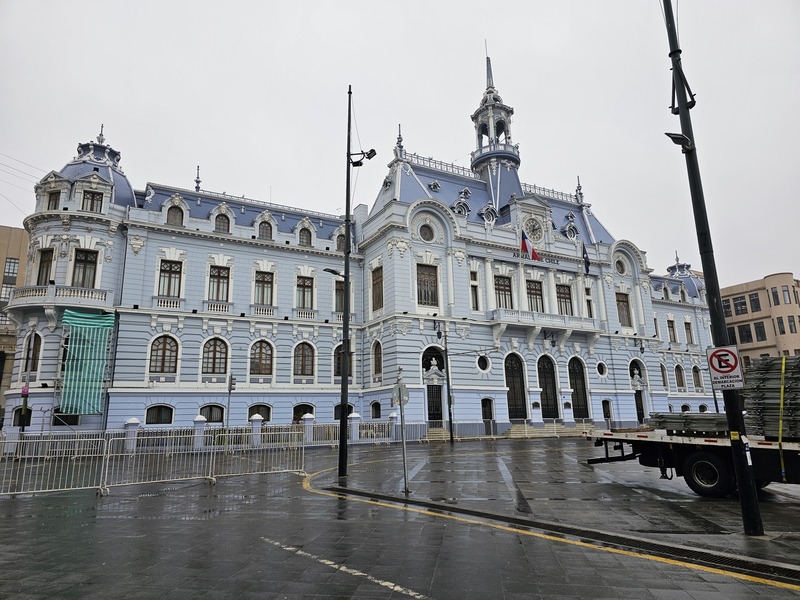 The weather wasn't particularly good, but it was still a nice walk.
And while there were a ton of hills, there were also a multitude of funiculars available to avoid having to walk up them!
The weather wasn't particularly good, but it was still a nice walk.
And while there were a ton of hills, there were also a multitude of funiculars available to avoid having to walk up them!
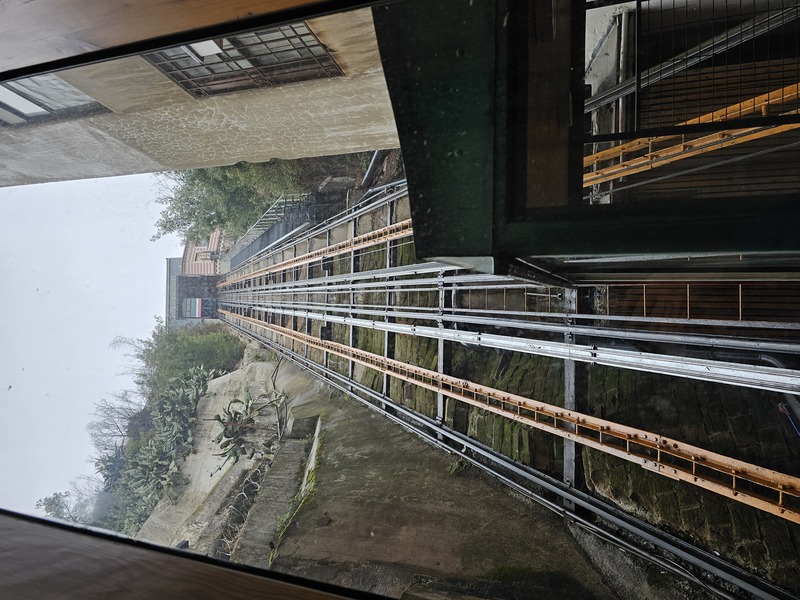 On our walk back down the hill, we saw a number of interesting pieces of street art.
On our walk back down the hill, we saw a number of interesting pieces of street art.
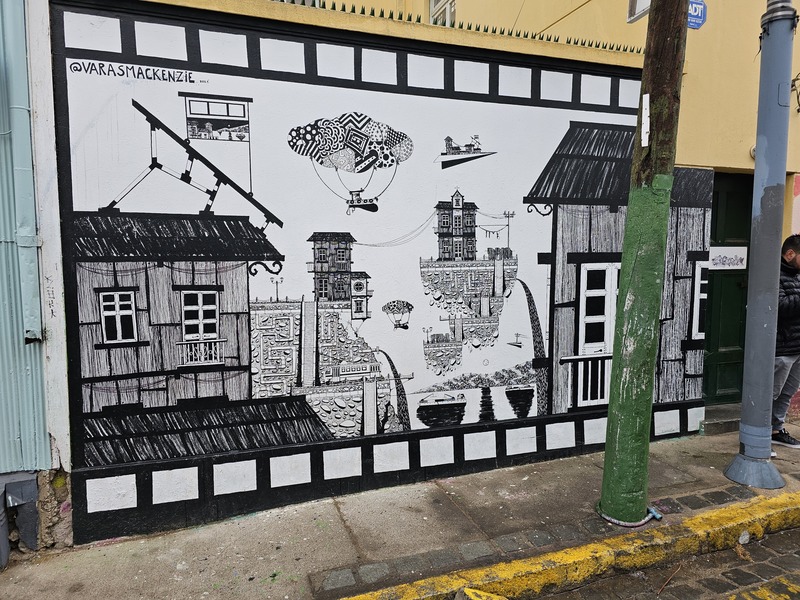
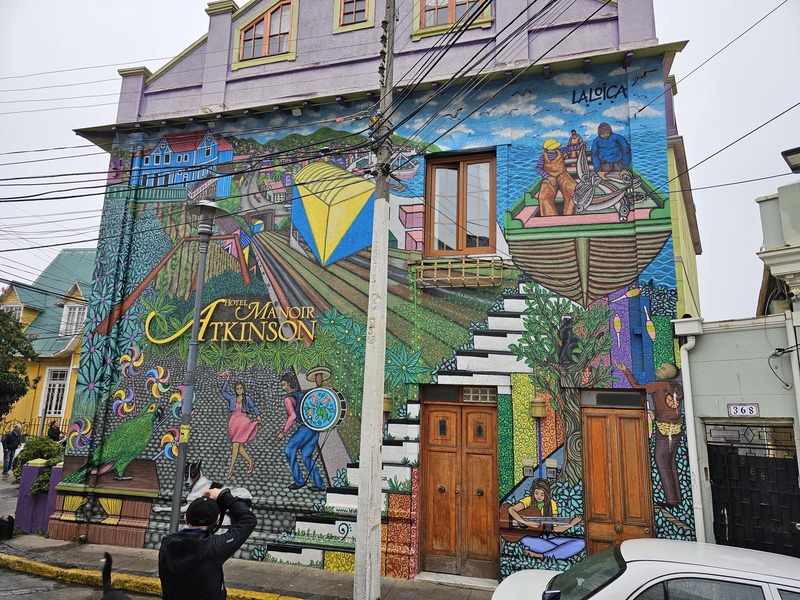
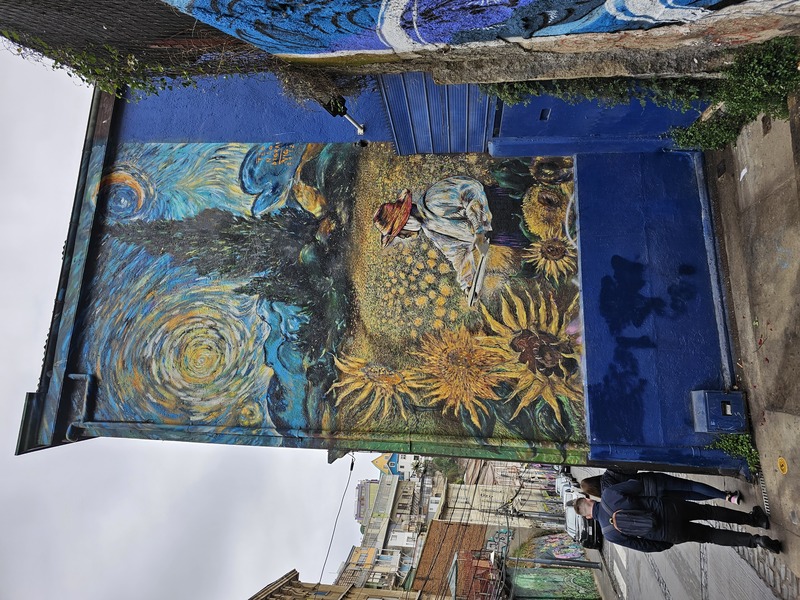 The final stop on the tour was a winery in the interior, which was honestly prettier than I expected given the season and weather.
The final stop on the tour was a winery in the interior, which was honestly prettier than I expected given the season and weather.
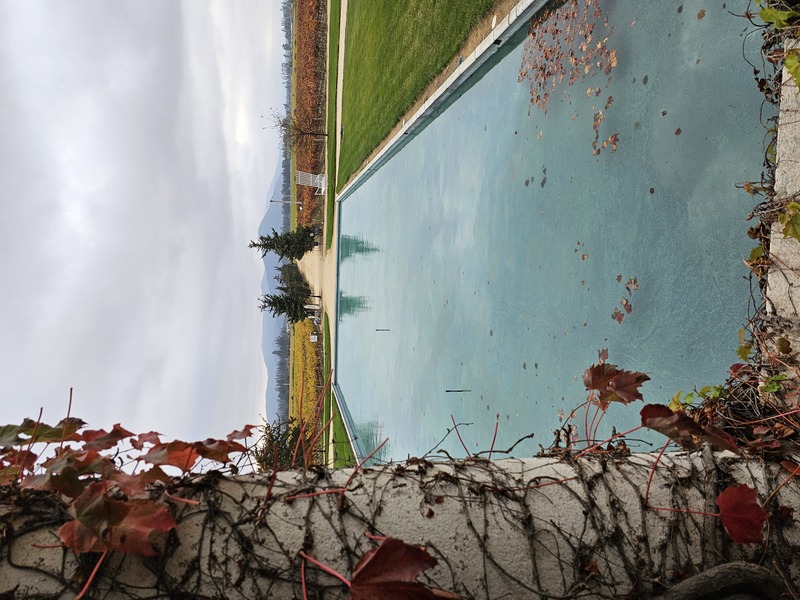
Easter Island was a surprise opportunity - I had looked at flights to the island before booking my trip, and they were extremely expensive.
However, once I was in Chile prices were much lower - unless I tried to use the english language site!
And even better, I was able to upgrade to a lay-flat seat for $150 each way - quite nice on the 5-hour flight to the world's most remote Airport.
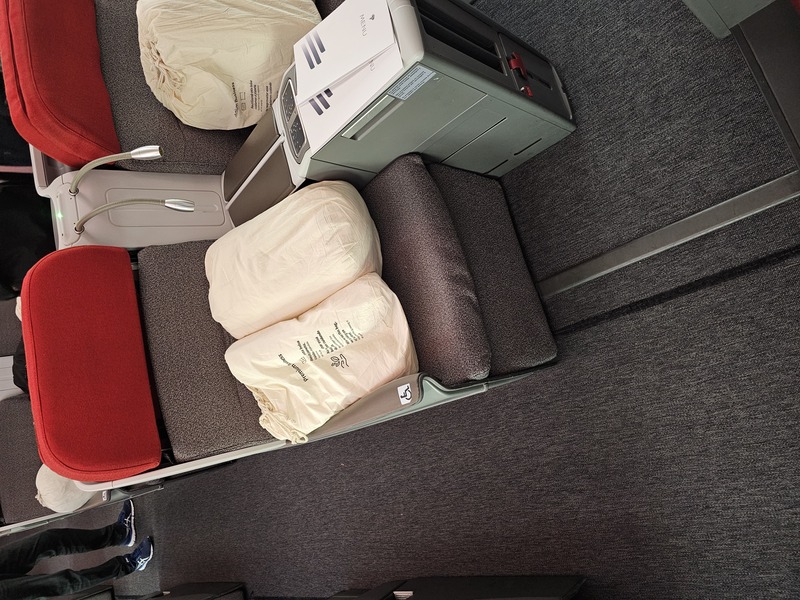 The on-island population was quite small, and there wasn't a huge number of tourists while I was there
- largely because there were only three flights a week to the island instead of the usual seven to fourteen.
I don't think there will ever be a better time to visit the island than when I did, and I'm extremely glad I did.
The on-island population was quite small, and there wasn't a huge number of tourists while I was there
- largely because there were only three flights a week to the island instead of the usual seven to fourteen.
I don't think there will ever be a better time to visit the island than when I did, and I'm extremely glad I did.
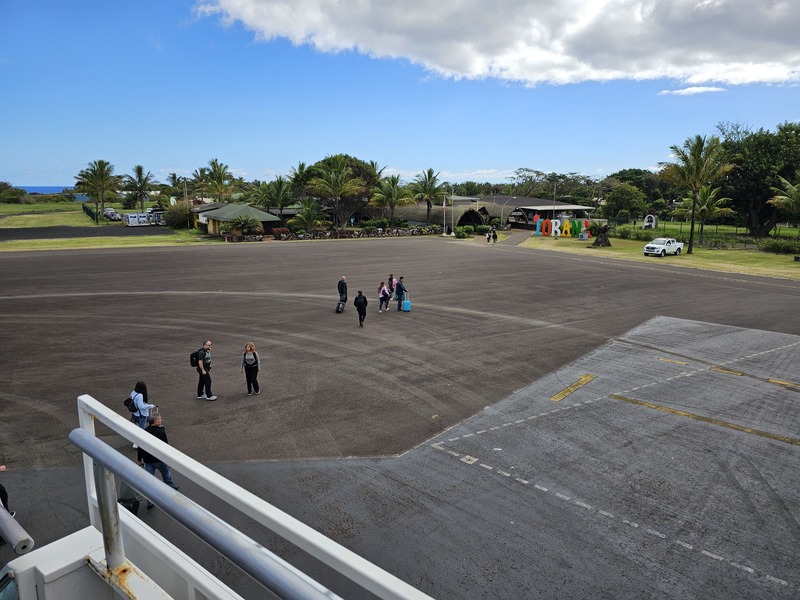
I was also able to get a nice all-inclusive hotel on the island, which dramatically reduced the amount of planning I had to do.
The room was comfortable, the staff was friendly, and the food was excellent - and I think they had 10 rooms used out of 100.
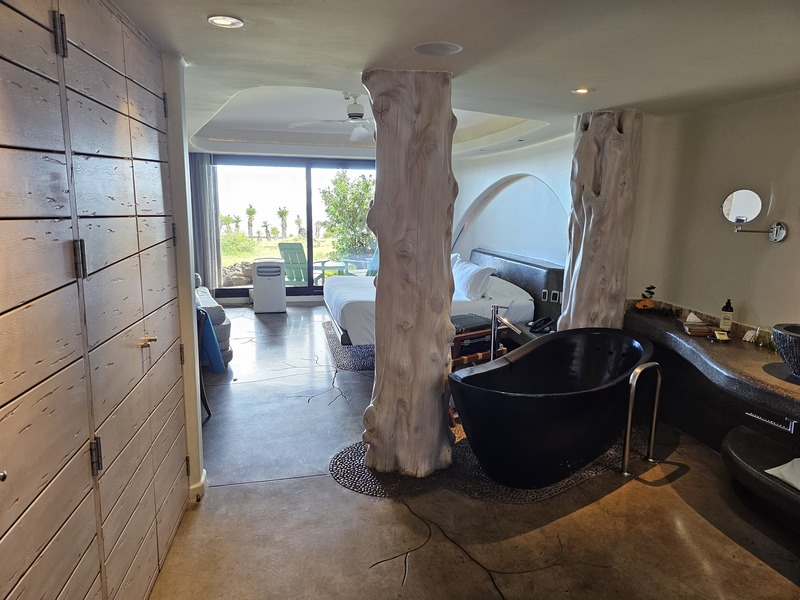
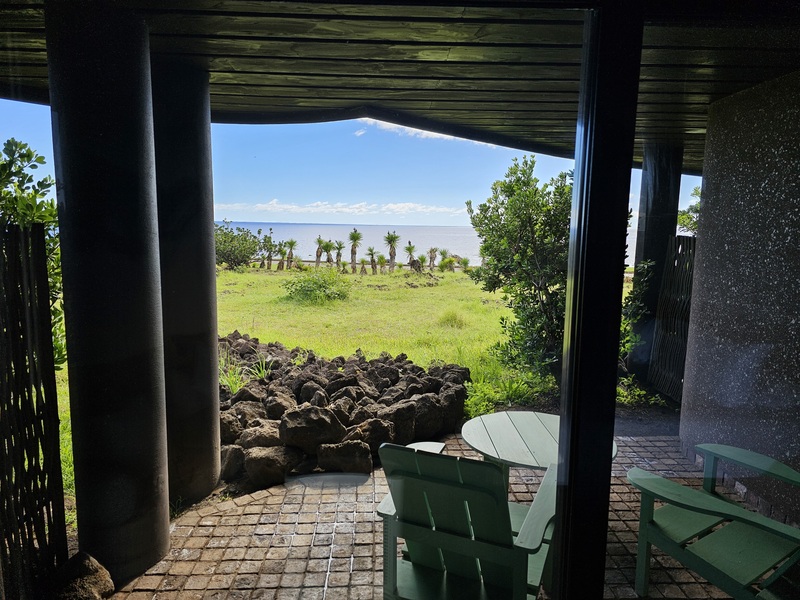 The island also had a number of wild horses, and I was lucky enough to see them outside my room one afternoon.
The island also had a number of wild horses, and I was lucky enough to see them outside my room one afternoon.
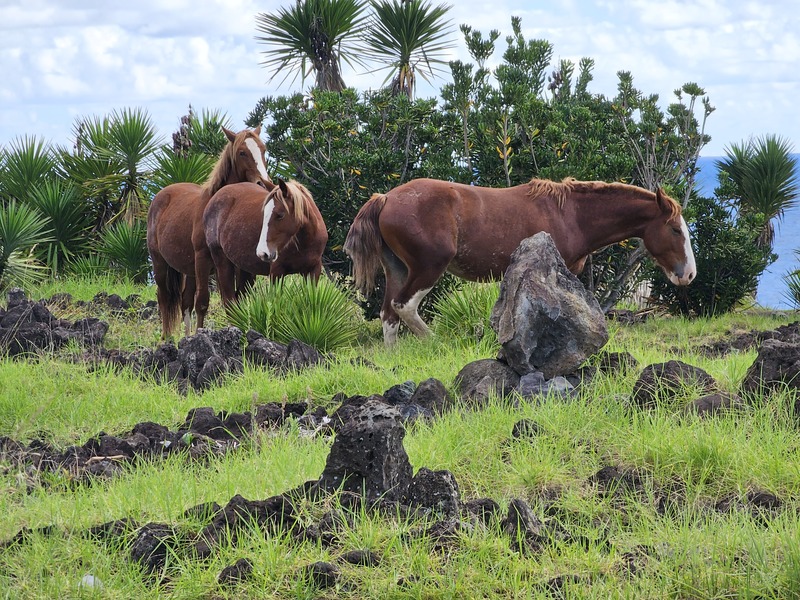
The main attraction of the island was of course the Moai, or stone heads.
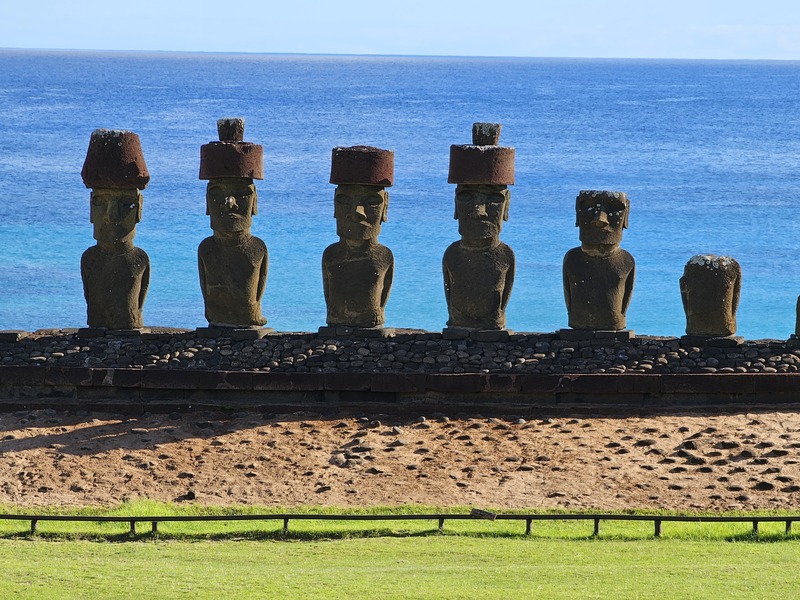 They were quite impressive, and potentially responsible for the island's ecological collapse and population decline.
They're found all over the island, and I was able to see them abandoned in-progress in the quarry, in transit, and at a few of their final destinations.
They were quite impressive, and potentially responsible for the island's ecological collapse and population decline.
They're found all over the island, and I was able to see them abandoned in-progress in the quarry, in transit, and at a few of their final destinations.
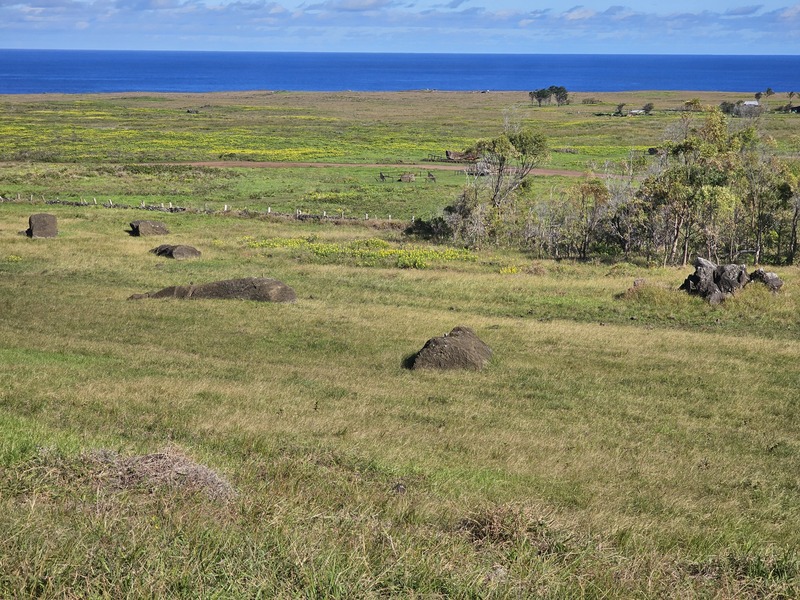
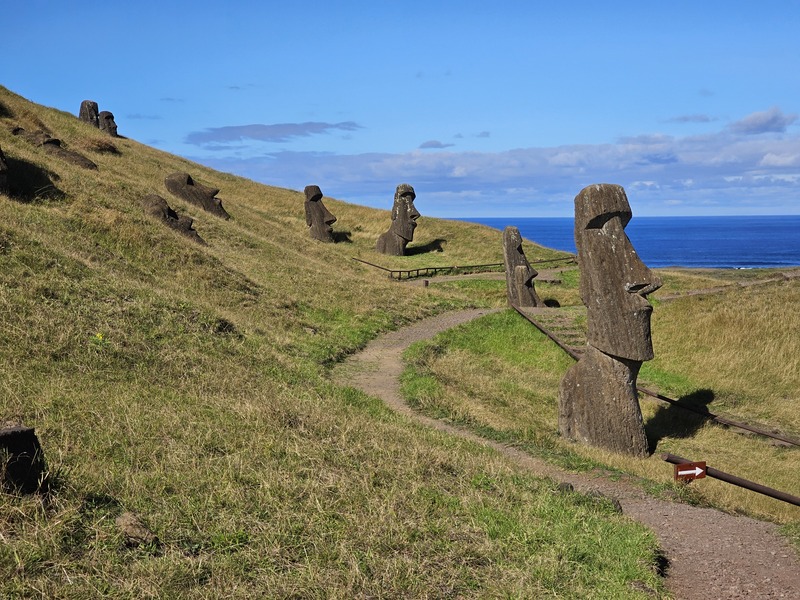
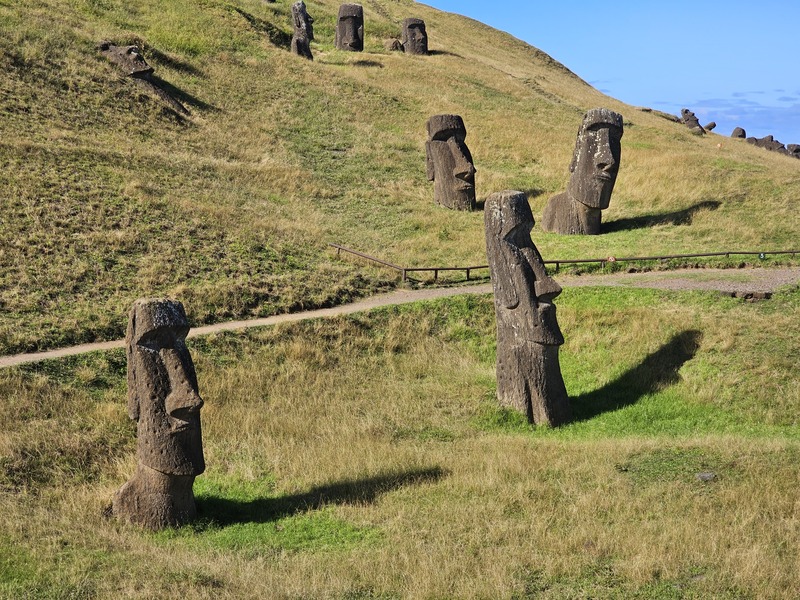 The quarry also featured the only sitting Moai, which was certainly different.
The quarry also featured the only sitting Moai, which was certainly different.
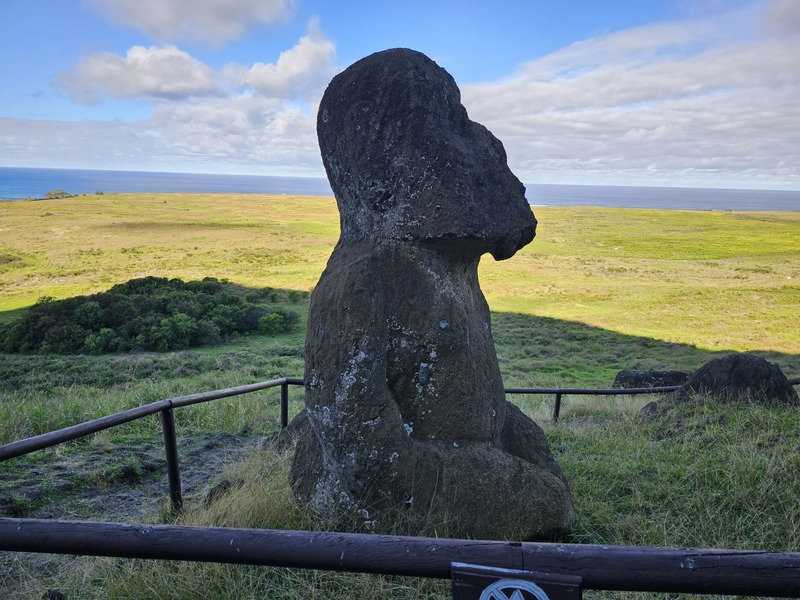 And from the quarry, we could see one of the closer final destinations with a whole row of Moai above a cliff.
And from the quarry, we could see one of the closer final destinations with a whole row of Moai above a cliff.
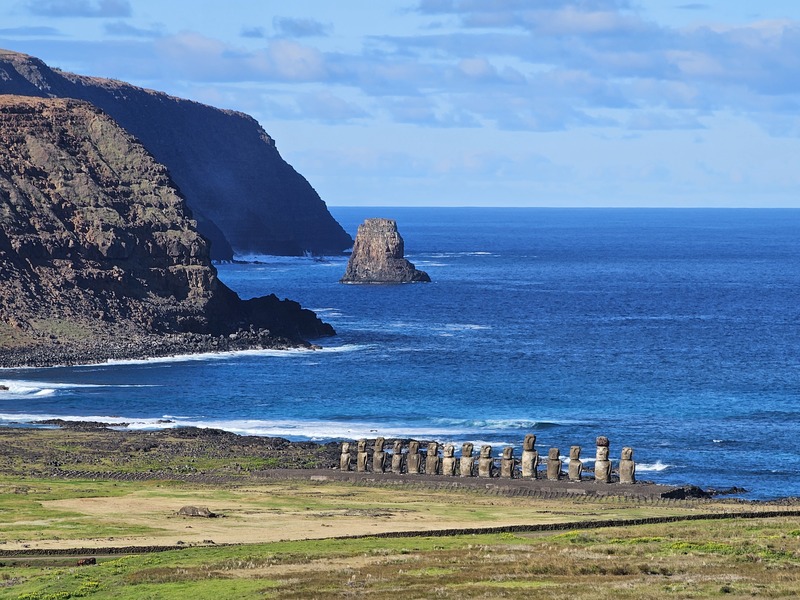 The 'hats' were quarried separately - they're made from the lightest stone available on the island, and I was able to see them being quarried and in transit too.
The 'hats' were quarried separately - they're made from the lightest stone available on the island, and I was able to see them being quarried and in transit too.
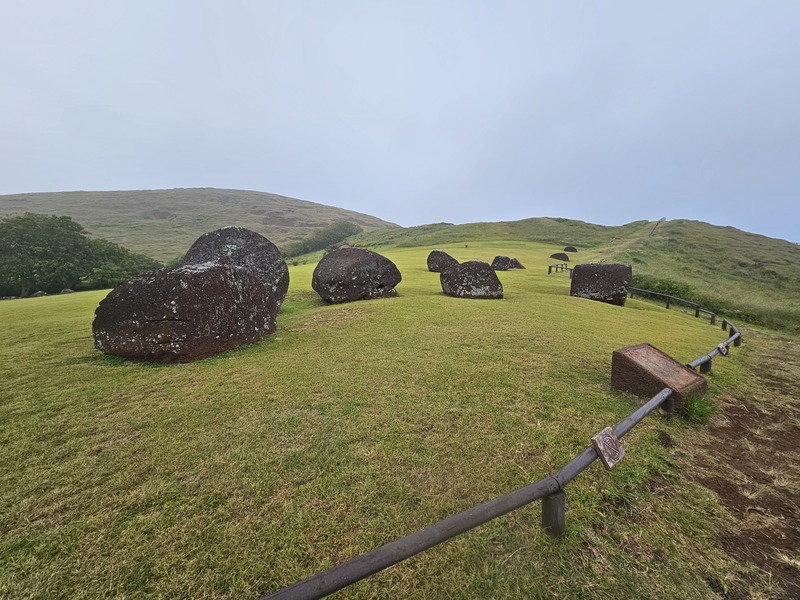
The Ranu Kau crater at the southern end of the island was a major archaeological site, with a number of buildings around the ridge.
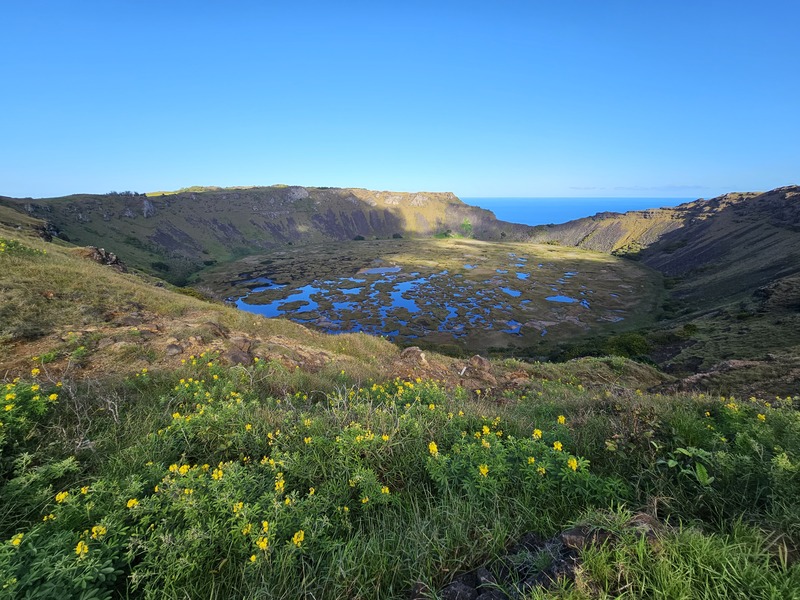
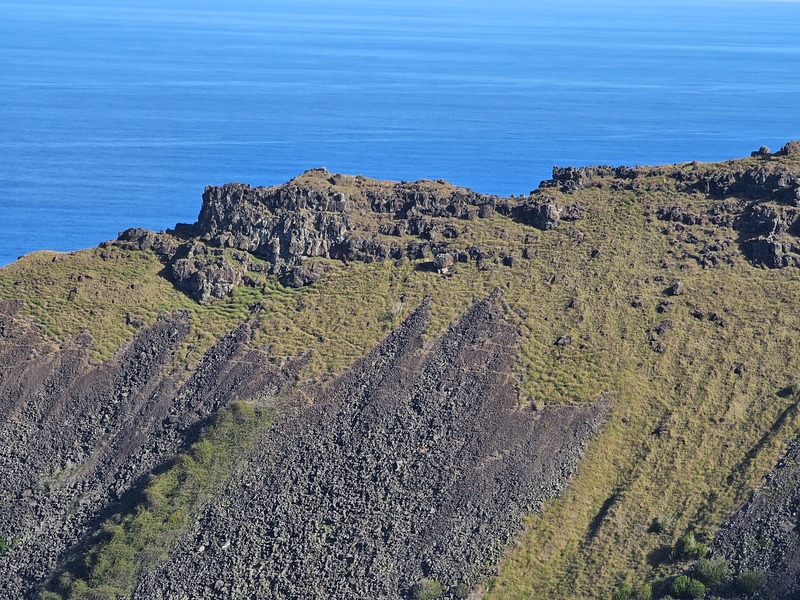
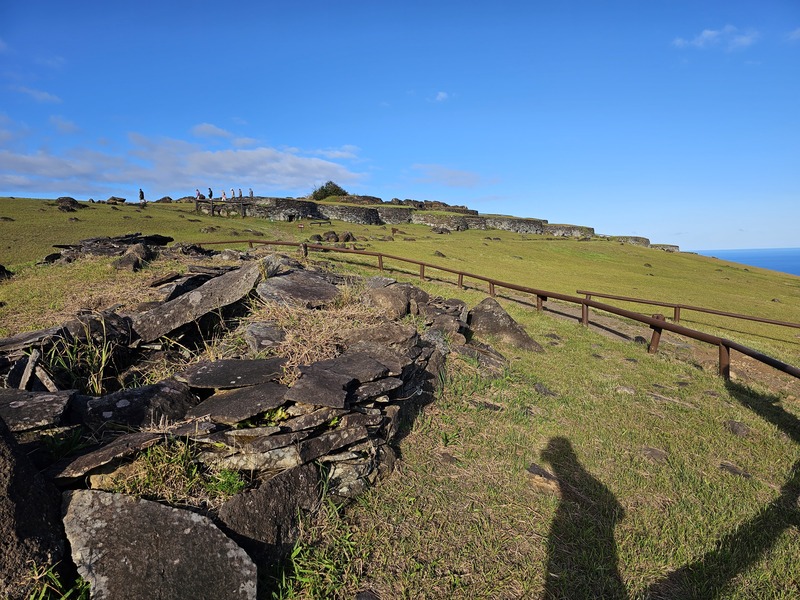 There were no Moai here, but it's believed to have been used as a diplomatic center, and for a coming of age ceremony.
The small outcrops offshore are the reason that Easter Island is only the most remote airport in the world and not the most remote island, but there was also an annual competition to swim to them and come back with a bird's egg.
There were no Moai here, but it's believed to have been used as a diplomatic center, and for a coming of age ceremony.
The small outcrops offshore are the reason that Easter Island is only the most remote airport in the world and not the most remote island, but there was also an annual competition to swim to them and come back with a bird's egg.
 The main town of Hanga Roa was visible from here, and it should be clear that it's not large.
The main town of Hanga Roa was visible from here, and it should be clear that it's not large.

The other major attraction of the island is reportedly the scuba diving, but I was unfortunately unable to arrange a dive due to not planning ahead enough.
I had three days on the island (Friday afternoon, Saturday, Sunday, and Monday morning) and I would have had to take Saturday as my "dive day" in order to be safe to fly again Monday afternoon, and I spent the day touring instead.
Don't be like me, kids. Plan ahead!
There was a beach, too - but it was as far away from the main population center as it's possible to be.
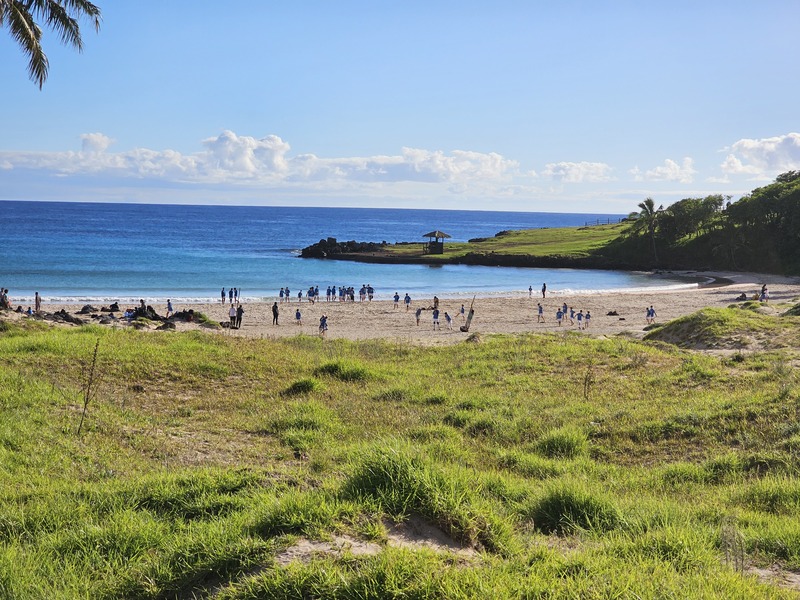 Most of the island was ringed by cliffs, which made for great views but inconvenient water access.
Most of the island was ringed by cliffs, which made for great views but inconvenient water access.
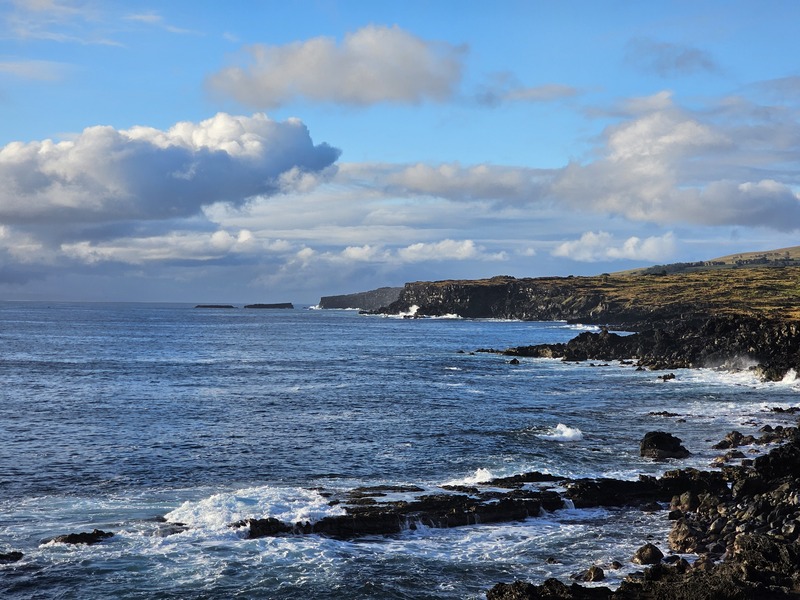 Even near Hanga Roa, the shore was steep and rocky, with no beach.
Even near Hanga Roa, the shore was steep and rocky, with no beach.
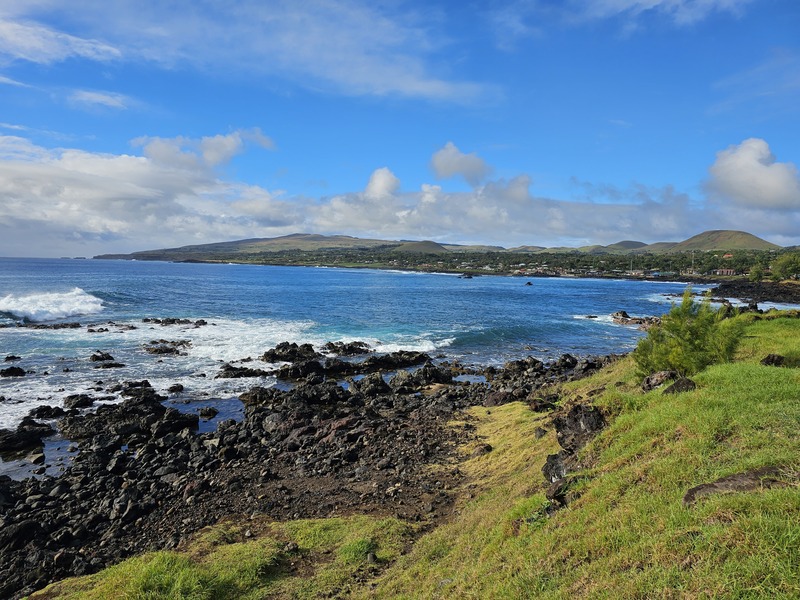
Overall, I'd rate the island as a great weekend trip, but not recommend staying longer than that.
Absolutely stunning sunsets though!
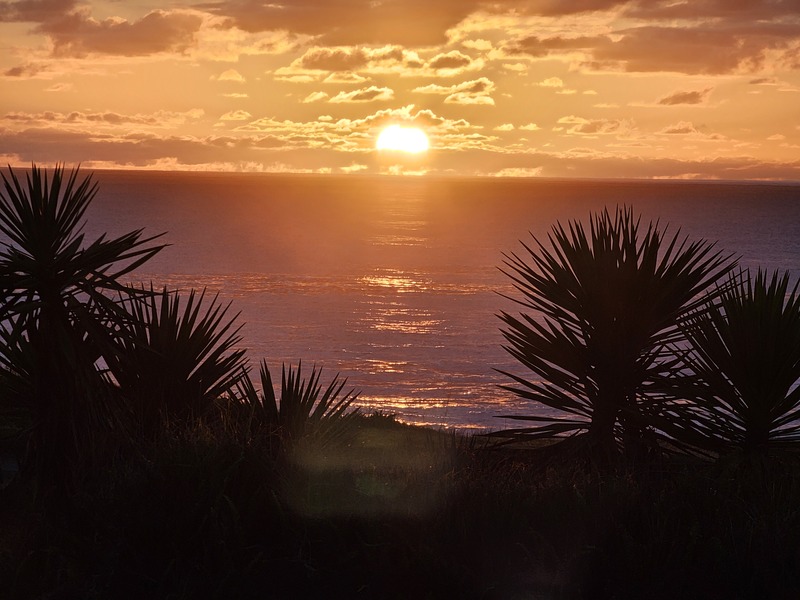
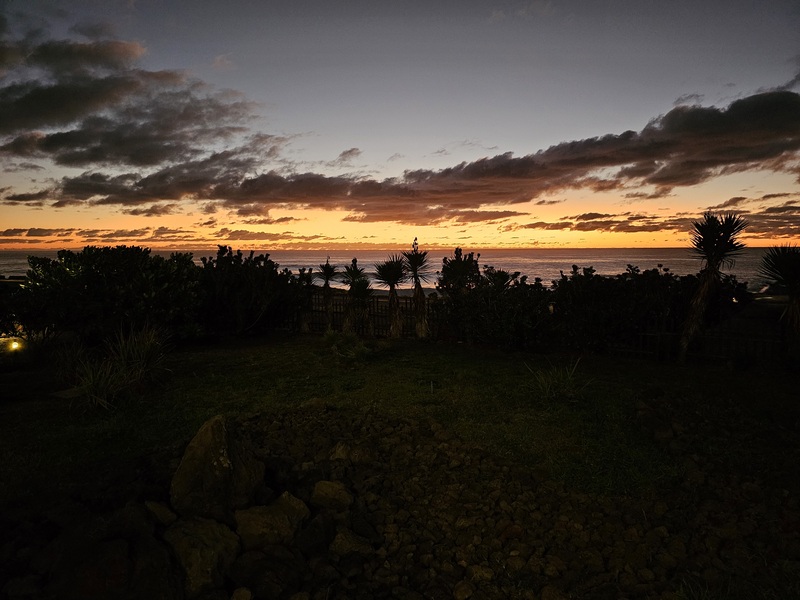
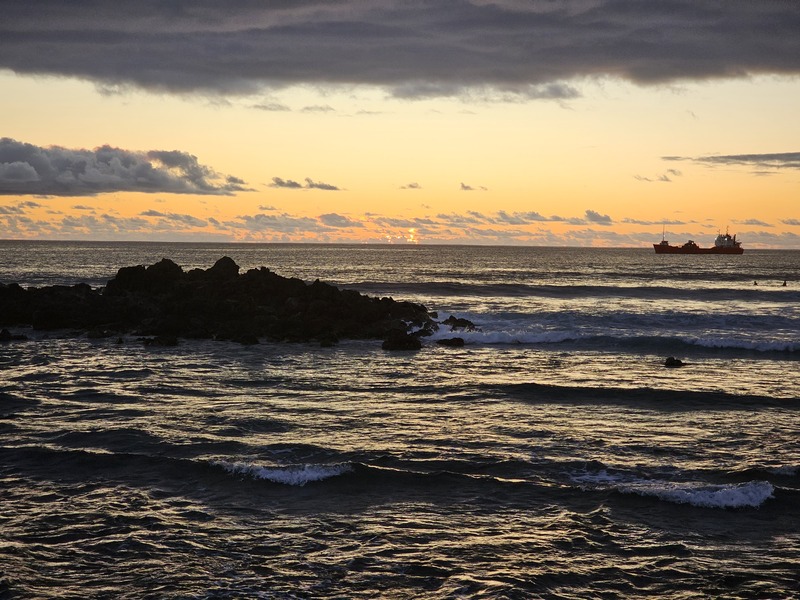
My general impression of the Atacama Desert was that it was bleak.
The desert was barren with more salt than water, and absolutely spectacular views at night.
I stayed in the same chain of resort as I did on Easter Island, and the food was once again excellent.
There were far more people here, though - unlike Easter Island where they were at only about 10% capacity, this resort was at least half full.
I suppose there's not as much of an off season in a desert where it never rains?
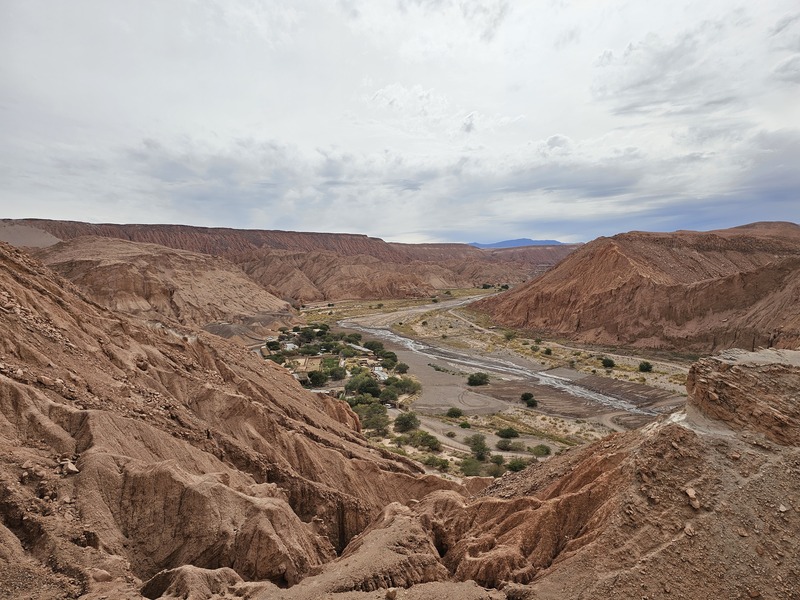 There were a number of short hikes available from the resort, and it provided a good introduction to the landscape.
There were a number of short hikes available from the resort, and it provided a good introduction to the landscape.

My first activity was a tour of the "Valley of the Moon", which was quite stunning.
 I was a large fan of the view here, where you couldn't quite tell whether the white was salt or snow.
It was cold enough that I wouldn't have found frost implausible!
I was a large fan of the view here, where you couldn't quite tell whether the white was salt or snow.
It was cold enough that I wouldn't have found frost implausible!
 The sunsets were also quite impressive.
The sunsets were also quite impressive.
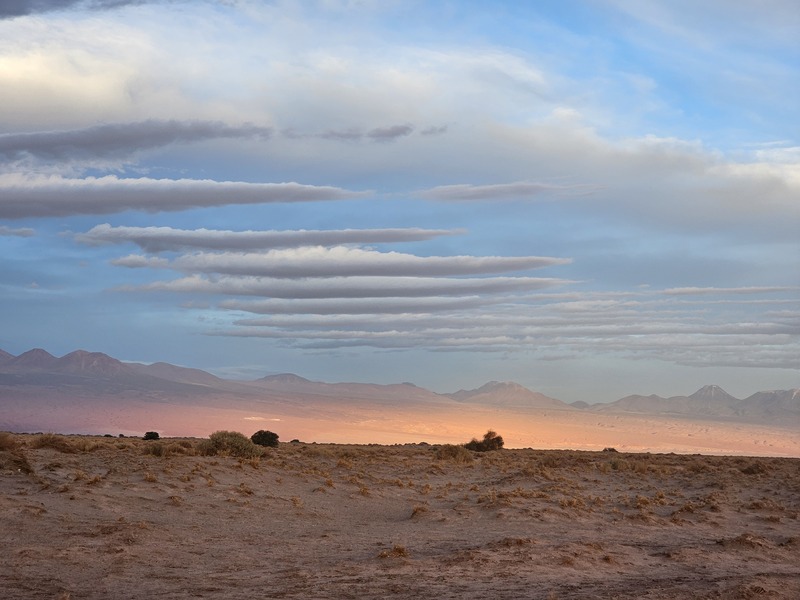
The next morning, I went on a hike down the "Valle de los Cactus", which followed a stream through a small canyon.
It was quite nice, with the walls of the canyon providing shade and the stream providing a nice selection of plants.
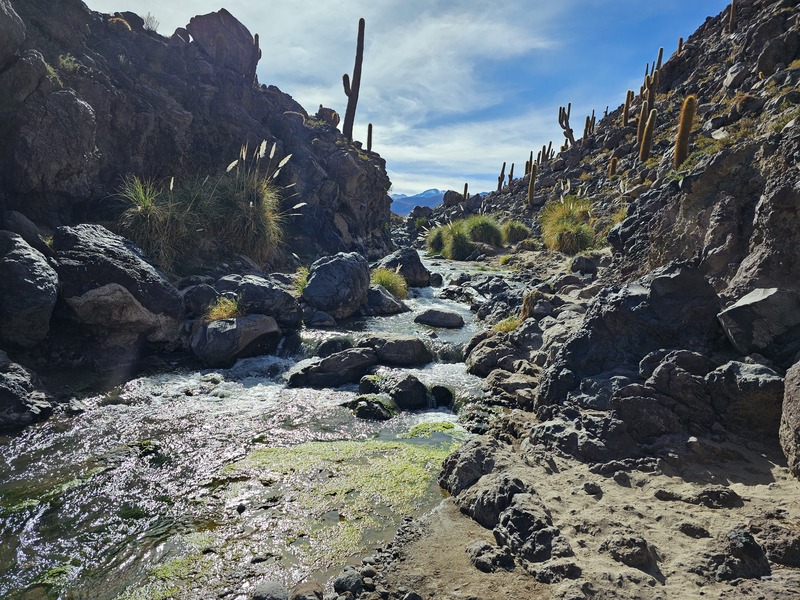 The canyon itself quickly became deeper, and there were some nice clambering sections.
The canyon itself quickly became deeper, and there were some nice clambering sections.
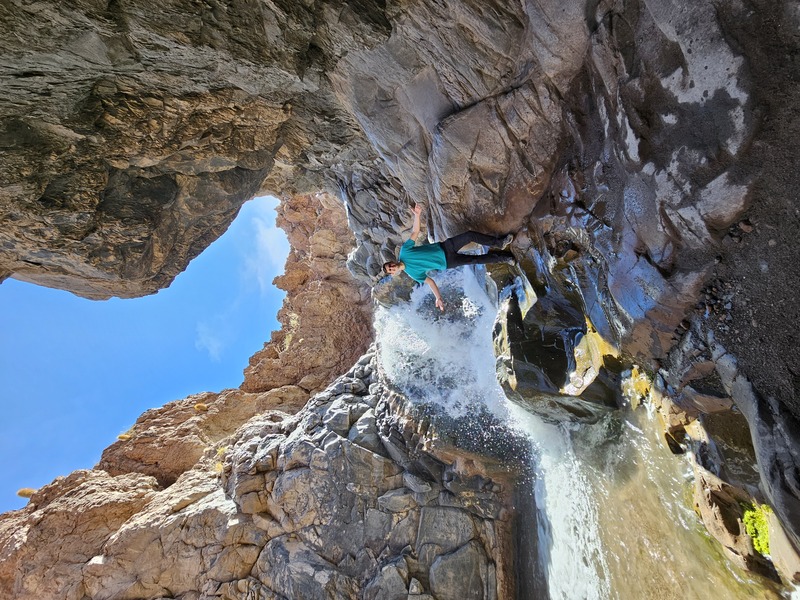
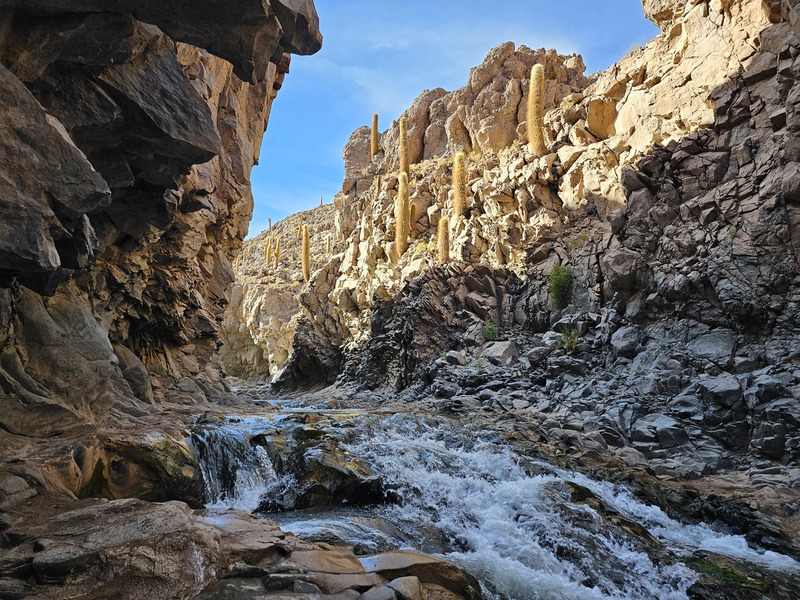 Overall, a nice morning hike, with quite a few cacti.
I'm glad we went downstream and not upstream, of course!
Overall, a nice morning hike, with quite a few cacti.
I'm glad we went downstream and not upstream, of course!
One of the things that seemed to be recommended was to swim in one of the supersaturated saltwater pools, which took some doing!
I hadn't thought to bring a swimsuit to inland Santiago, and so I needed to purchase one there.
Of course, the standard swimsuit in Chile does not appear to be "board shorts", and so I ended up with a speedo...
Found in the basement of the sketchiest mall I have ever visited.
All of the adjacent establishments were either strip clubs or more-than-strip clubs, though I didn't exactly go check!
Not the sort of thing I was expecting to find while on a quest for a swimsuit, that was for sure.
And this is what it got used for - 5 minutes of floating and trying not to irritate any of my scrapes in the saltwater.
It was very floaty though!
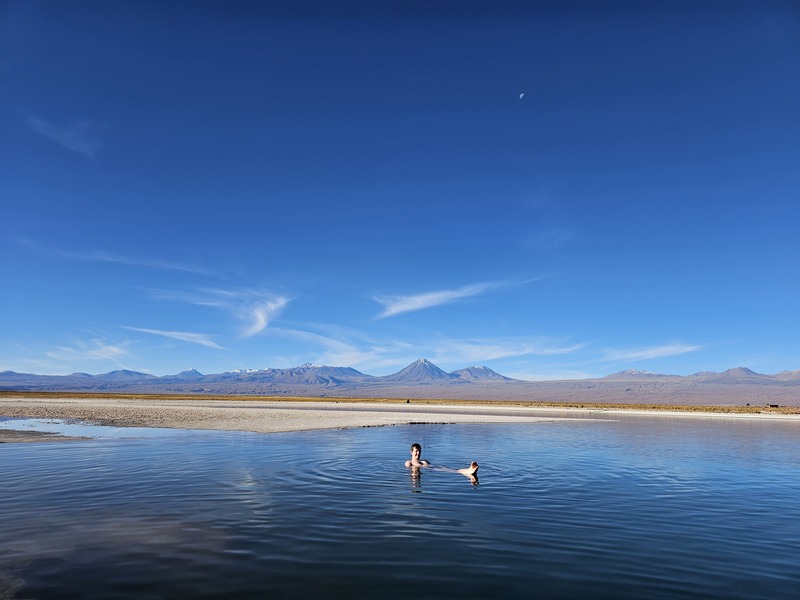
The Atacama Desert is most famous for its incredible nighttime views, and it lived up to the hype in my opinion.
The photos I took don't really do it justice, but I was able to see far more stars than I've seen before.
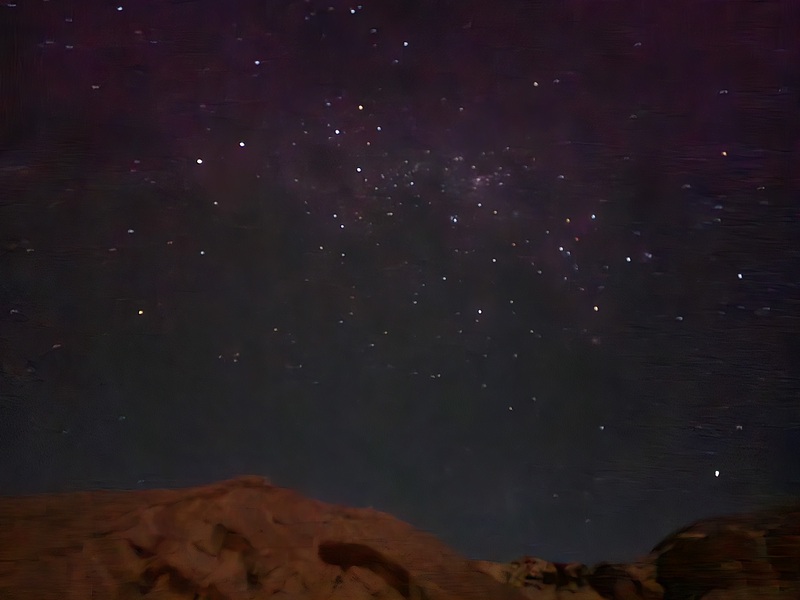 The resort had a large (24"?) mirrored telescope, and a guide to point out the stars.
It was cold, but quite worth doing.
The resort had a large (24"?) mirrored telescope, and a guide to point out the stars.
It was cold, but quite worth doing.
I got up extremely early the next morning for a drive to the Geysers del Tatio, which sat at a bit more than 14,000 feet above sea level.
This geyser field is the third largest in the world, and it was quite the sight in the early morning.
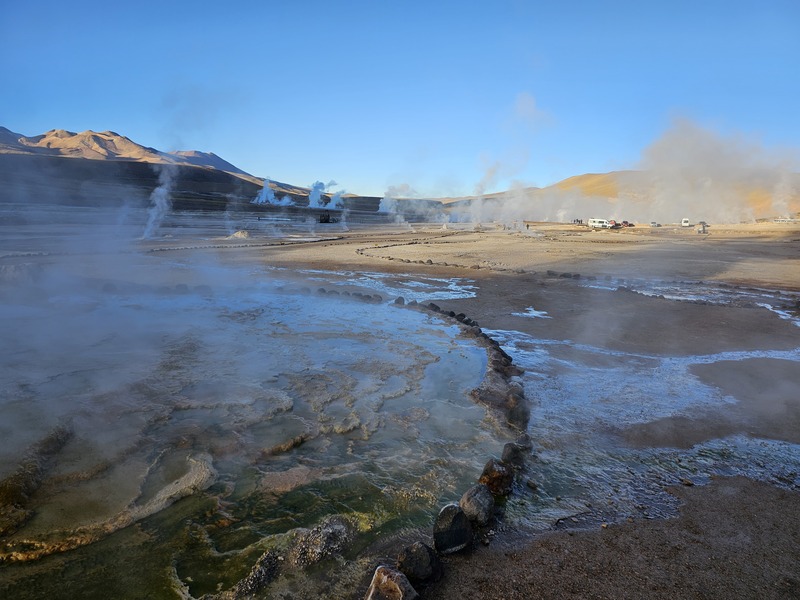
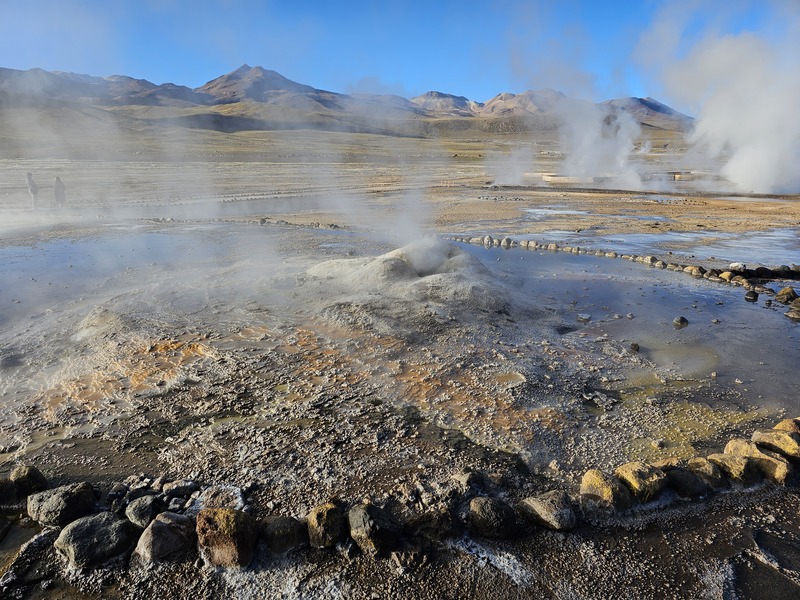 The geysers were interesting, but unfortunately didn't hold a candle to Yellowstone.
On the drive back, we stopped at a marshy area where we were able to see a variety of wildlife, including Llamas and Vicunas.
Or at least I think - I'm labelling this photo a year late!
The geysers were interesting, but unfortunately didn't hold a candle to Yellowstone.
On the drive back, we stopped at a marshy area where we were able to see a variety of wildlife, including Llamas and Vicunas.
Or at least I think - I'm labelling this photo a year late!
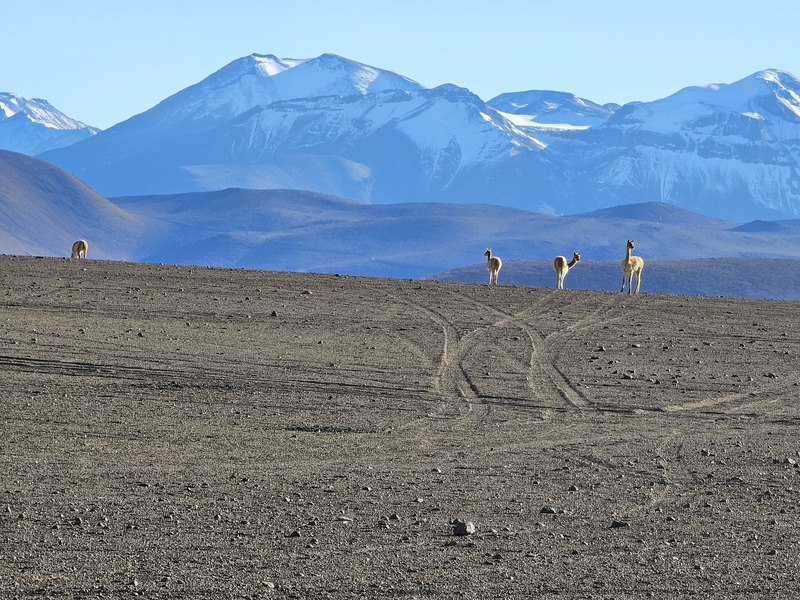
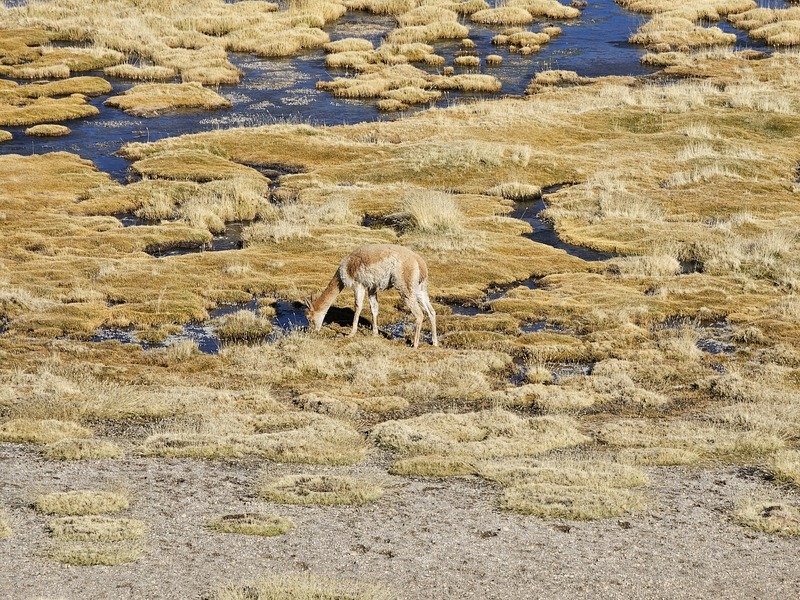

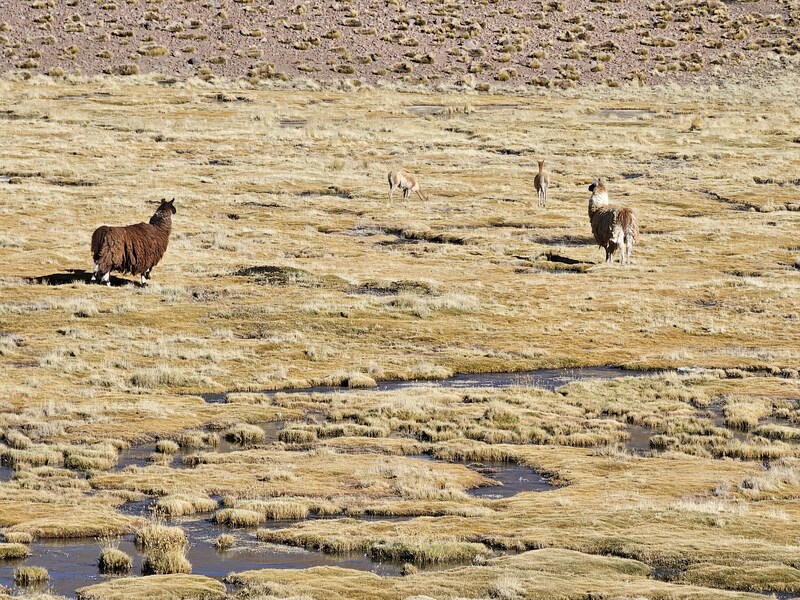 The views on this excursion were fantastic, even if I wasn't a fan of the wake-up time.
The views on this excursion were fantastic, even if I wasn't a fan of the wake-up time.
